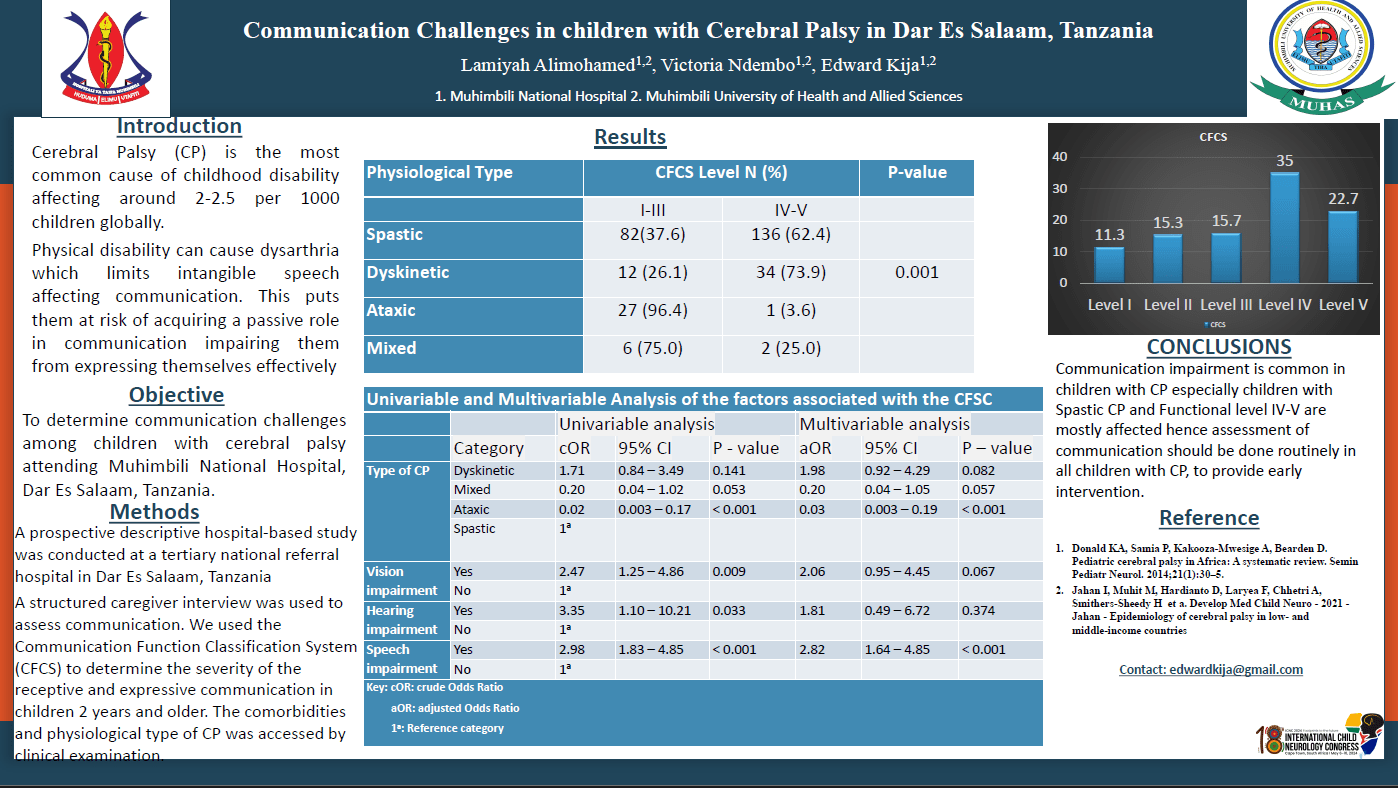Communication Challenges In Children With Cerebral Palsy In Dar Es Salaam, Tanzania
Background: Cerebral Palsy (CP) is the most common static encephalopathy affecting around 2-2.5 per 1000 children globally. Their physical disability can cause dysarthria which limits intangible speech affecting communication. This puts them at risk of acquiring a passive role in communication enabling them from expressing themselves effectively. Methods: A prospective descriptive hospital-based study was conducted at a tertiary national referral hospital in Dar Es Salaam, Tanzania to determine communication challenges in children with CP attending Paediatric Neurology clinic. A structured caregiver interview was used to assess communication. We used the Communication Function Classification System (CFCS) to determine the severity of the receptive and expressive communication in children 2 years and older. The comorbidities and physiological type of CP was accessed by clinical examination.
Results: Three hundred children were enrolled into the study, out of these 196(65%) were males with the median age of 4 years (IQR 2-14). Of the enrolled children 173(57.7%) had CFCS level IV-V. Children with Spastic CP had more severe communication impairment CFCS level IV-V 136(78.6%) compared to children with Dyskinetic CP 34(19.6%), p-value 0.001. Vision impairment was observed in 38(22%), hearing impairment 17(9.8%) and speech impairment 129(74.6%) of children with CFCS level IV-V. Conclusion: Communication impairment is common in children with CP. Children with Spastic CP and Functional level IV-V are mostly affected. Recommendation: Assessment of communication should be done routinely in all children with CP, to provide early intervention to enhance their communication.
Lamiyah Alimohamed
Muhimbili University of Health and Allied Sciences
Tanzania
Victoria Ndembo
Muhimbili National Hospital
Tanzania
Edward Kija
Muhimbili University of Health and Allied Sciences
Tanzania

Victoria Ndembo
Muhimbili National Hospital
Tanzania